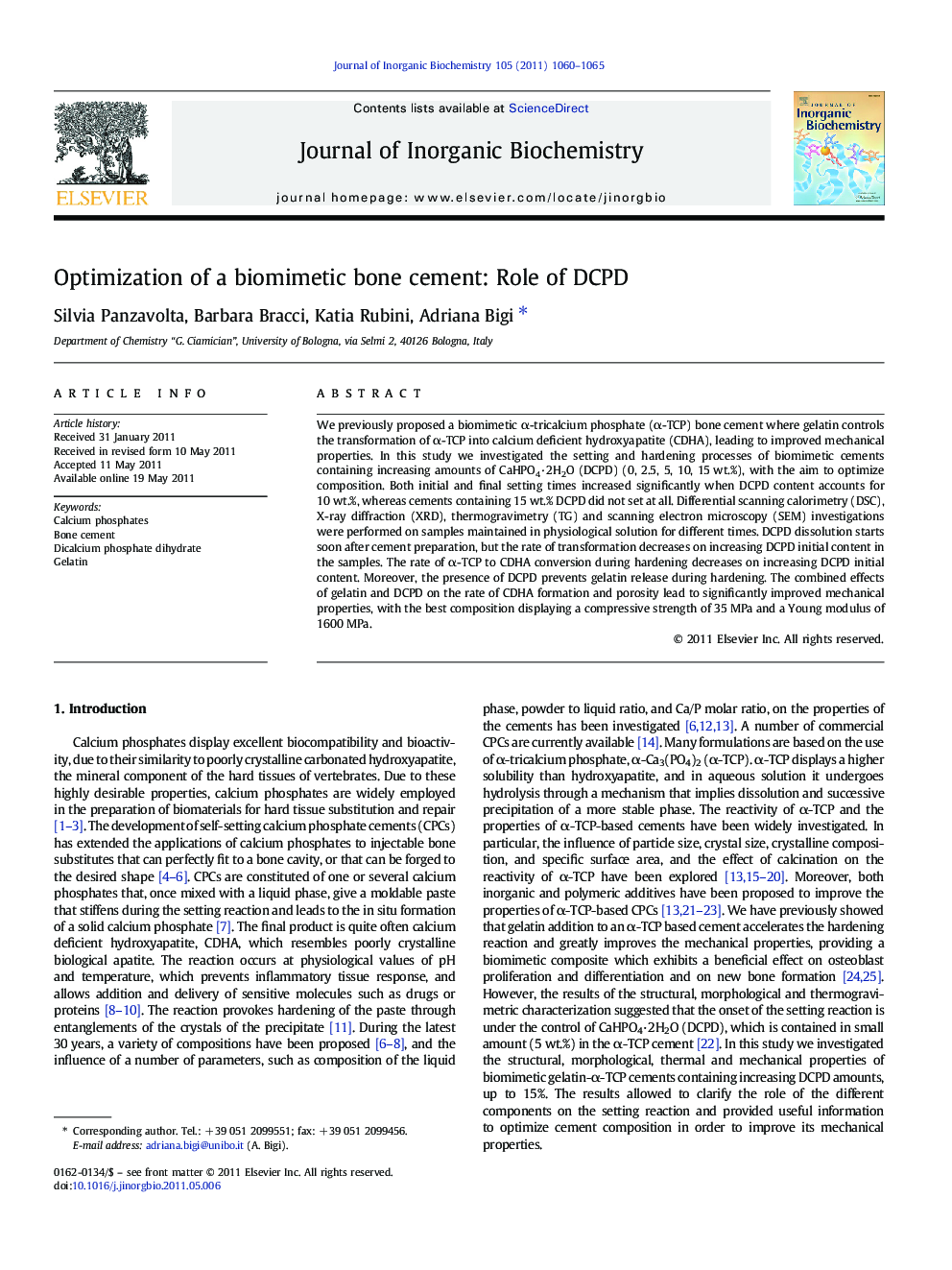| کد مقاله | کد نشریه | سال انتشار | مقاله انگلیسی | نسخه تمام متن |
|---|---|---|---|---|
| 1316993 | 976497 | 2011 | 6 صفحه PDF | دانلود رایگان |

We previously proposed a biomimetic α-tricalcium phosphate (α-TCP) bone cement where gelatin controls the transformation of α-TCP into calcium deficient hydroxyapatite (CDHA), leading to improved mechanical properties. In this study we investigated the setting and hardening processes of biomimetic cements containing increasing amounts of CaHPO4·2H2O (DCPD) (0, 2.5, 5, 10, 15 wt.%), with the aim to optimize composition. Both initial and final setting times increased significantly when DCPD content accounts for 10 wt.%, whereas cements containing 15 wt.% DCPD did not set at all. Differential scanning calorimetry (DSC), X-ray diffraction (XRD), thermogravimetry (TG) and scanning electron microscopy (SEM) investigations were performed on samples maintained in physiological solution for different times. DCPD dissolution starts soon after cement preparation, but the rate of transformation decreases on increasing DCPD initial content in the samples. The rate of α-TCP to CDHA conversion during hardening decreases on increasing DCPD initial content. Moreover, the presence of DCPD prevents gelatin release during hardening. The combined effects of gelatin and DCPD on the rate of CDHA formation and porosity lead to significantly improved mechanical properties, with the best composition displaying a compressive strength of 35 MPa and a Young modulus of 1600 MPa.
DCPD addition to a biomimetic gelatin–α-TCP cement reduces the rate of α-TCP conversion into CDHA during hardening. The slower conversion favors gelatin interaction with the growing CDHA crystals and results in significantly improved mechanical properties.Figure optionsDownload as PowerPoint slide
Journal: Journal of Inorganic Biochemistry - Volume 105, Issue 8, August 2011, Pages 1060–1065